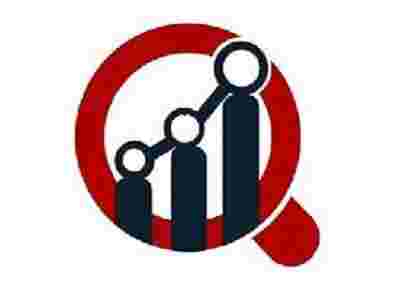Sewage treatment technologies Advancements for Sustainable Wastewater Handling

Sewage treatment technologies are critical for managing wastewater generated by residential, commercial, and industrial activities. These technologies include biological treatment, chemical treatment, and advanced oxidation processes, aimed at reducing pollutants and ensuring the safe disposal of sewage. The growing population and urbanization are driving the demand for efficient sewage treatment solutions, as cities seek to manage wastewater effectively and protect public health and the environment.
The water and wastewater treatment equipment market has emerged as a critical segment in the global industrial and environmental landscape. As urbanization accelerates and industrial activities expand, the demand for clean water and efficient wastewater management solutions has never been higher. Governments, municipalities, and private enterprises are increasingly investing in advanced treatment equipment to ensure safe water supply, environmental compliance, and sustainable operations. This market encompasses a wide range of technologies and equipment, including filtration systems, pumps, membrane technologies, chemical dosing units, sludge treatment equipment, and more, all designed to improve water quality and minimize environmental impact.
Market Overview and Key Drivers
The water and wastewater treatment equipment market is experiencing robust growth due to several intertwined factors. Rapid industrialization, population growth, and the increasing prevalence of waterborne diseases have underscored the need for efficient water treatment systems. Additionally, stringent environmental regulations across developed and developing nations have compelled industries and municipalities to adopt advanced treatment solutions. These regulations often mandate adherence to specific water quality standards and disposal norms, creating a consistent demand for modern equipment and treatment technologies.
Technological advancements are another critical driver shaping the market. Innovations in membrane filtration, ultraviolet (UV) disinfection, reverse osmosis (RO), and smart monitoring systems have significantly enhanced the efficiency and reliability of treatment processes. These technologies not only ensure compliance with regulatory standards but also reduce operational costs and energy consumption. As a result, companies are increasingly integrating these solutions into municipal water treatment plants, industrial facilities, and residential water purification systems.
Segmentation of Water and Wastewater Treatment Equipment
The market can be broadly segmented based on equipment type, end-use industry, and region. Equipment type segmentation includes filtration units, pumps, aeration systems, chemical dosing equipment, sludge handling machinery, and membrane systems. Among these, filtration and membrane-based technologies are witnessing the fastest adoption due to their high efficiency in removing impurities, pathogens, and contaminants from water.
End-use segmentation encompasses municipal water treatment, industrial wastewater management, and residential applications. Municipal water treatment plants account for a significant share of the market, driven by rising urban populations and the need for safe drinking water. Industrial applications are also growing rapidly, particularly in sectors such as chemical processing, pharmaceuticals, food and beverage, and textiles, where wastewater treatment is both a regulatory requirement and an operational necessity.
Technological Trends Transforming the Market
Several technological trends are reshaping the water and wastewater treatment equipment market. Membrane technologies, such as reverse osmosis and nanofiltration, are increasingly replacing conventional treatment methods due to their higher efficiency and ability to remove dissolved salts and microscopic contaminants. Advanced oxidation processes (AOPs) and UV disinfection are gaining traction for their ability to neutralize harmful microorganisms without introducing chemical residues.
The integration of digital monitoring and automation systems is another noteworthy trend. Smart sensors, IoT-enabled monitoring devices, and AI-driven analytics allow operators to continuously track water quality, detect anomalies, and optimize treatment processes in real time. This not only ensures compliance with stringent water quality standards but also reduces energy consumption and operational costs, offering a compelling value proposition to municipalities and industries alike.
Regional Insights and Market Dynamics
The water and wastewater treatment equipment market exhibits distinct regional characteristics. North America and Europe are mature markets with well-established infrastructure, strong regulatory frameworks, and significant investment in advanced treatment technologies. These regions prioritize sustainable water management practices and have witnessed substantial adoption of energy-efficient and automated treatment solutions.
In contrast, Asia-Pacific is emerging as the fastest-growing market due to rapid urbanization, industrial expansion, and increasing awareness about water scarcity and pollution. Countries such as China, India, and Japan are investing heavily in both municipal and industrial water treatment infrastructure. The region’s growth is further fueled by government initiatives aimed at improving water quality, reducing environmental pollution, and promoting sustainable development.
Latin America and Middle East & Africa are also witnessing steady market expansion, primarily driven by water scarcity issues and the need for wastewater recycling in arid regions. Innovative solutions, including desalination plants and decentralized treatment systems, are gaining importance to address local water challenges efficiently.
Challenges and Opportunities
Despite promising growth prospects, the water and wastewater treatment equipment market faces several challenges. High capital investment requirements, complex regulatory compliance, and the need for skilled personnel can be barriers for smaller municipalities and industrial players. Additionally, the maintenance and replacement costs of advanced treatment equipment can pose financial constraints.
However, these challenges also present opportunities for market players. Companies that offer cost-effective, energy-efficient, and scalable treatment solutions can capitalize on growing demand. The rising trend of public-private partnerships (PPPs) in water infrastructure projects provides further opportunities for manufacturers and service providers to expand their footprint. Moreover, increasing environmental awareness and the global push towards sustainability are expected to drive long-term demand for eco-friendly treatment technologies.
Future Outlook
The future of the water and wastewater treatment equipment market is closely tied to global environmental priorities and urban development patterns. As water scarcity intensifies and pollution levels rise, both municipal authorities and industrial players will continue to invest in reliable and efficient treatment equipment. Innovations in automation, AI-driven monitoring, and green technologies are expected to redefine market standards, making water treatment processes more sustainable and cost-effective.
With increasing global emphasis on sustainability, circular water economies, and wastewater recycling, the market is poised for significant growth in the coming decade. Companies that focus on technological innovation, regulatory compliance, and customer-centric solutions will be well-positioned to lead in this evolving and vital industry.





